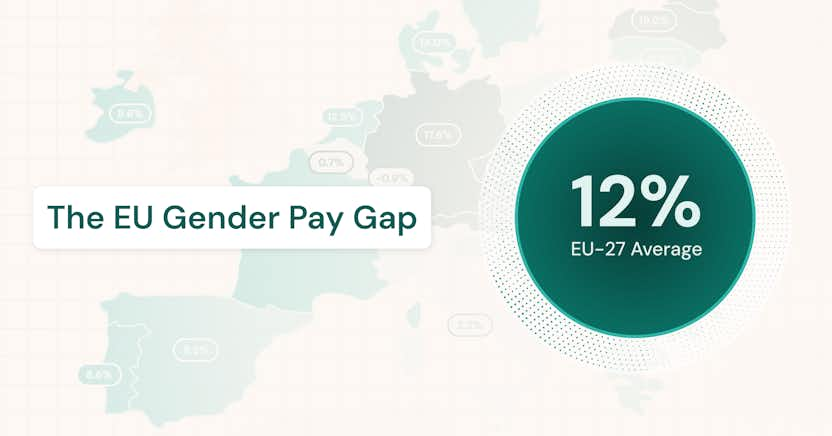4 Ways for Hybrid, Remote, and International Companies to Master Pay Transparency

Learn more about the following beqom products
Is having hybrid, remote, or international teams complicating your efforts toward pay transparency? You're not alone.
Global pay transparency sounds straightforward enough: be open about compensation, treat employees fairly, and comply with local laws. Most organizations embrace the concept, recognizing that 82% of job hunters are more likely to consider applying to a company that’s transparent about pay.
But implementing transparency across distributed teams is challenging, even for well-prepared organizations. Cross-country and border compliance is complicated, and effective transparency requires a mix of legal know-how, cultural awareness, and an openness to modernizing existing processes and systems built for single-location workforces rather than distributed teams.
For organizations with a workforce spanning the globe, pay transparency is no longer optional. The real challenge is mastering the four operational realities we break down here, and exploring how to face them in practice.
Pay transparency challenge #1: Jurisdictional complexity
When an employee in Berlin works for a company headquartered in New York on a project managed from Singapore, which pay transparency laws apply?
The answer depends on multiple factors that often conflict with each other. Under EU rules (such as Rome I and Brussels I), employment law typically applies to where the work is performed, not where the company is based. In contrast, some US state laws tie obligations to the employer’s presence in the state, meaning remote roles can still trigger compliance even if the employee is elsewhere. Meanwhile, countries like the UK, Canada, and New Zealand are preparing to implement their own versions of pay transparency rules, each with its own requirements.
This creates scenarios where a single role can trigger transparency requirements in multiple jurisdictions simultaneously, leaving the company responsible for meeting different disclosure timing, scope of required information, and enforcement mechanisms.
Adding to the complexity is when employees move to a different state or country without changing roles, which, in hybrid or remote-first companies, happens far more than traditional employment frameworks anticipated. A relocation may trigger new disclosure obligations for the employer, even if the employee’s contract and pay remain unchanged. Traditional employment frameworks weren’t designed to anticipate this kind of overlapping compliance.
Solution: Adopt a standardized global approach
One way to reduce this legal and operational burden is to set a global “highest common denominator” standard. So, if Colorado requires salary ranges and benefits descriptions in every job posting, then every role worldwide gets the same treatment. By adopting the most stringent requirements from across the globe, organizations eliminate the guesswork of tracking which rules apply where.
This approach is also useful for remote contributors who may frequently relocate across jurisdictions. Instead of recalculating disclosure obligations each time someone moves, the company has one clear standard to apply.
While a standardized global approach will likely increase internal costs—as you'll need to level up compensation across all regions to maintain equity—it also provides a clear compliance baseline and confidence for both candidates and employees.
Pay transparency challenge #2: Geographic pay equity tensions
The collision between location-based compensation and transparency requirements creates one of the biggest headaches of global compensation management. When traditional geographic pay differentials, which are designed to reflect local market conditions and cost of living, become visible to international teams, this can lead to uncomfortable conversations.
A senior developer in San Francisco earning $180,000 annually might do identical work to a colleague in Prague earning $80,000. When both employees can see each other's compensation, the lesser-paid employee may feel frustrated that they're being compensated differently for the same role, even though both salaries might be competitive within their local markets.
This can cause a whole cascade of organizational challenges: employees who feel underpaid are 45% more likely to job hunt, even if they're actually paid fairly. This puts companies in a bind: they need to pay higher rates to stay competitive in expensive markets, yet those same rates can look unfair when compared to salaries in other regions.
Solution: Apply a hybrid model
To manage perceptions of fairness, some organizations adjust their transparency based on role type. Hybrid models strike a balance between flexibility and consistency, providing companies with the flexibility to address equity concerns without committing to a single, rigid global approach. A common hybrid model often involves pay bands based on regional tiers or combining cost-of-labor with a role premium.
Positions that are hard to fill, or executive roles, may get full visibility globally, while other jobs adhere to local norms or minimum legal requirements. Pairing this with clear communication about compensation philosophy (such as explaining why pay differs across regions, and how fairness is evaluated beyond just base pay) helps set expectations.
Hybrid models can also help handle exceptions, such as remote contractors or short-term project hires. By applying different transparency rules to contingent workers versus permanent employees, organizations can stay flexible while preserving fairness within their core workforce.
Pay transparency challenge #3: Operational scaling challenges
Managing transparency across global operations can reveal major limitations in current HR technology and processes as well.
Most legacy human resources information systems (HRIS) lack the functionality to automatically flag which transparency laws apply to specific roles based on a candidate's or employee's location. This forces HR teams to manually track requirements across potentially dozens of jurisdictions—a task that's both time-intensive and error-prone.
The complexity multiplies when companies try to manage global job postings across multiple platforms. LinkedIn, for example, generally shows the same salary range in job postings to all viewers—regardless of where they’re located—whereas local job boards must follow their jurisdiction’s transparency laws and include the required pay information across all views and platforms.
For HR teams managing global hiring campaigns, manually keeping track of these platform-specific and location-specific requirements becomes a logistical nightmare that grows exponentially with each market.
Solution: Choose the right tech
Organizations can define pay bands and job architectures globally, then rely on modern compensation platforms like beqom to adapt transparency practices regionally.
With beqom, HR teams have the infrastructure to transform global pay transparency from a compliance nightmare into a competitive advantage. Unified job architecture and compensation analytics provide consistency across borders, while real-time monitoring automatically flags potential issues before they escalate. The result is a system that maintains global standards, flexes for local requirements, and frees HR teams to focus on talent strategy instead of manual workarounds.
Pay transparency challenge #4: Cultural and communication complexities
In some regions, like the US and Europe, candidates and employees are increasingly expecting direct salary discussions. In other countries, compensation remains a more private matter, and aggressive transparency can feel intrusive, culturally inappropriate, or like a red flag that the company prioritizes money over long-term career development or work-life balance.
Because pay transparency is shaped by cultural norms as well as legal mandates, companies risk missteps when they apply a one-size-fits-all approach. An organization's "transparent" approach could actually create barriers with top talent in certain markets, while its "respectful" but non-transparent approach frustrates candidates who expect immediate clarity.
Many organizations aren’t prepared to manage these nuances, leading to inconsistent candidate experiences and misunderstandings that can damage the employer brand across markets.
Solution: Customize regionally while upholding global principles
For hybrid and remote companies with multicultural teams, adapting transparency to local norms is critical to building trust across borders. A global compensation philosophy can provide the anchor for articulating the company's values and determining pay, while execution is flexible to meet local expectations.
In practice, this could mean sharing exact salary ranges in regions where it’s mandated or expected, while offering broader ranges or narrative explanations in regions where direct disclosure is culturally sensitive.
Equally important is Manager Enablement. Localized training can equip leaders to explain compensation decisions in a way that resonates with cultural norms while preventing miscommunication.
The competitive advantage of getting global pay transparency right
Navigating global pay transparency laws can feel daunting, but the companies that push through these complexities are discovering that the payoffs are well worth them. For hybrid, remote, and international organizations, clarity across borders keeps distributed employees engaged and prevents resentment that can erode trust in a global workforce.
For more guidance on how to put transparency into action, check out our Expert Guide to Pay Transparency— packed with proven strategies that help HR, business leaders, and managers achieve compliance with confidence.
Get in touch
Ready to take the next step and build a pay strategy that works for your unique team? Get in touch with our experts today to learn how beqom can help.







